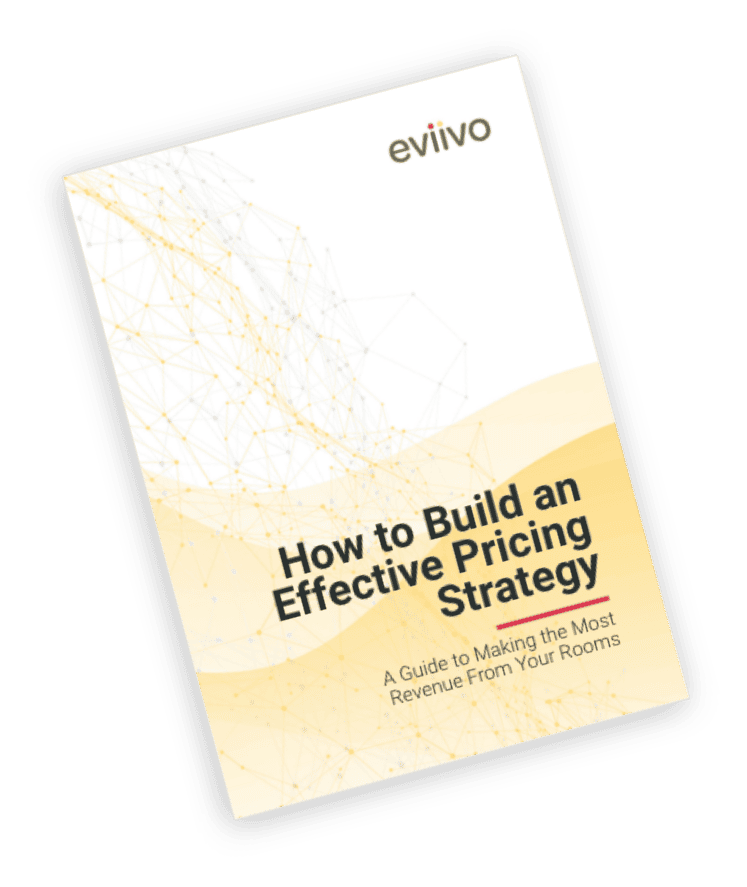Operating a successful business means paying close attention to the numbers. For the hospitality industry, key hotel metrics provide a vital way to measure a property’s performance against universal standards and drive growth.
By calculating and keeping track of your most important metrics, you can gauge how your accommodation is doing over time and better set up your revenue management and pricing strategies for success.
Below, we take a look at 10 key hotel performance metrics you should use, including why you should measure them and how to calculate them.
1. Available Room Nights
What does this hotel metric measure?
The number of nights that a given unit (or units) in your accommodation is available for guests to book.
Why does this hotel metric matter?
Calculating your Available Room Nights is the baseline for measuring your property’s performance. It’s the must-know you need before you can calculate more in-depth metrics like your occupancy rate (more on that below).
How do you calculate this hotel metric?
Multiply the number of available units by the number of days in the time period you’re reporting on (be that a day, a week, a month or a year). See below for examples of calculating the Available Room Nights in one year for 1 and 2 units respectively.
2. Room Revenue
What does this hotel metric measure?
Your Room Revenue is the sum of the booking revenues generated from the Room Nights you have sold over a given period, for any given accommodation units.
Why does this hotel metric matter?
This is another calculation you need to have ready for some of the later metrics. As a baseline, you want to know how much revenue you’re generating from your rooms in total.
How do you calculate this hotel metric?
This one’s easy. Just add up the total value of all the bookings that fall within your chosen Room Nights period.
3. Average Daily Rate (ADR)
What does this metric measure?
Your ADR measures the average price that guests pay for your sold/occupied rooms.
Why does this metric matter?
The ADR gives you a good idea of how much guests are prepared to pay for your rooms. From this, you can identify the average price you are able to command per room night.
Measuring ADR on a weekly or monthly basis gives you strong comparative data to identify booking trends and monitor your performance against your competitors.
How do you calculate this metric?
Divide the total booking revenues received in the given period by the number of Room Nights you actually sold in that period.
4. Hotel Occupancy Rate
What does this metric measure?
Your occupancy rate measures the % of rooms in your property that are occupied in a given period.
Why does this metric matter?
Calculating your occupancy rate is crucial to understanding how many of your rooms are actually occupied in any given period.
You want to identify fluctuations in occupancy. By measuring your occupancy rate at a regular, recurring interval (e.g. weekly), you gain useful data for your forecasting and revenue management planning. You can use this data to set up automatic rate increases or decreases at occupancy thresholds you choose when you use a dynamic pricing automation tool.
Hotel occupancy rate formula:
5. Revenue Per Available Room (RevPAR)
What is RevPAR for hotels?
Your RevPAR (or Revenue Per Available Room) measures your property’s overall performance when it comes to generating revenue. It’s one of the most important barometers of success, as it incorporates both your occupancy rate and your ADR.
Why does this hotel metric matter?
Calculating your RevPAR helps you identify how well you are doing, set up the right target room rates, and compare your performance against your competitors. Consider it good news when your RevPAR increases!
Hotel revpar formula:
Multiply your occupancy rate by your average daily rate. Note that the two rates should be worked out for the exact same reporting period to give you an accurate RevPAR measurement.
6. Average Length of Stay
What does it measure?
The average length of stay measures the number of nights that guests prefer to stay at your property – on average, of course.
Why does this metric matter?
It is important that you understand how the average length of stay changes at different times of the year. These insights can help you learn whether and when you should impose minimum length of stays (MinLOS).
Calculating this metric can also help you decide on promotions that encourage longer stays, and reduce your administrative and operating costs. Learn more about how you can influence booking behaviors with fantastic promos.
How do you calculate this metric?
Divide your number of Room Nights sold/occupied by your number of bookings for the same period.
7. Average Booking Window
What does it measure?
Your Average Booking Window measures the average number of days that elapse between the moment a reservation is made and the date when the guest checks in.
Why does this metric matter?
By identifying how far in advance your guests book their stays, you’ll be able to take action to encourage early bookings. Having more people book early is good news for your cash flow. It increases the speed at which you fill your rooms and your ability to command higher prices in the high season.
How do you calculate this metric?
8. Revenue Per Property
What does it measure?
Your Revenue Per Property is the sum of all the bookings and extras you have sold across all the accommodation units in your property. “Extras” include food and drinks sales, as well as any purchases of other ancillary products and services.
Why does this metric matter?
If you own or manage multiple properties, you want to have visibility over each property’s performance. Calculating your Revenue Per Property gives you a clearer picture of how your properties are performing and your overall business revenue.
How do you calculate this metric?
Add up the value of all the bookings and extras sold across every room in your property for the given period.
9. Bookings and Revenues by Channel
What does it measure?
This metric measures the performance of each channel you use to sell your rooms. These channels might include Online Travel Agencies (OTAs), online direct bookings, and offline direct bookings (e.g. bookings by phone).
Why does this metric matter?
By measuring how many bookings and how much revenue you receive from each, you can identify which channels are performing best for you. Then you can adapt your pricing strategies accordingly. Remember to look at both the number of bookings per channel and the revenue value of these bookings to get the full picture.
How do you calculate this metric?
Your calculation here will be dependent on various factors, including the number and types of channels you use and differing OTA commission rates. Using a property management platform like eviivo Suite can enable you to create easy-to-read graphics and reporting on your booking volume and revenue per channel.
10. Annual Revenue & Profit Forecast
What does it measure?
This is your forecast of revenue for the year ahead, based upon some key (ideally data-led) assumptions.
Why does this metric matter?
Having an annual revenue forecast in place is a must if you’re starting a new accommodation business. Consider it the magic formula you should use to work out your business plan. Your annual revenue forecast should be enough to cover all your annual costs plus any loan repayments. You can go one step further by forecasting your profit for the same period.
Hotel forecasting formula:
To calculate your revenue forecast, you need to make assumptions on your occupancy rate and average daily rate for the year ahead. Then multiply these numbers by your total number of bookable accommodation units and the number of days in the year that your property is available to book.
See how to calculate your annual hotel profit forecast below.
11. Conclusion
Calculating the above key hotel performance metrics is your first step to making the right decisions for your business.
This is especially true if you want to build a strong revenue management practice and develop pricing strategies that keep revenue and occupancy optimized, all year round.
Our pricing white paper takes you step-by-step through the process of developing and implementing an effective pricing strategy, from using metrics through to leveraging dynamic pricing and automation. Download it today.



